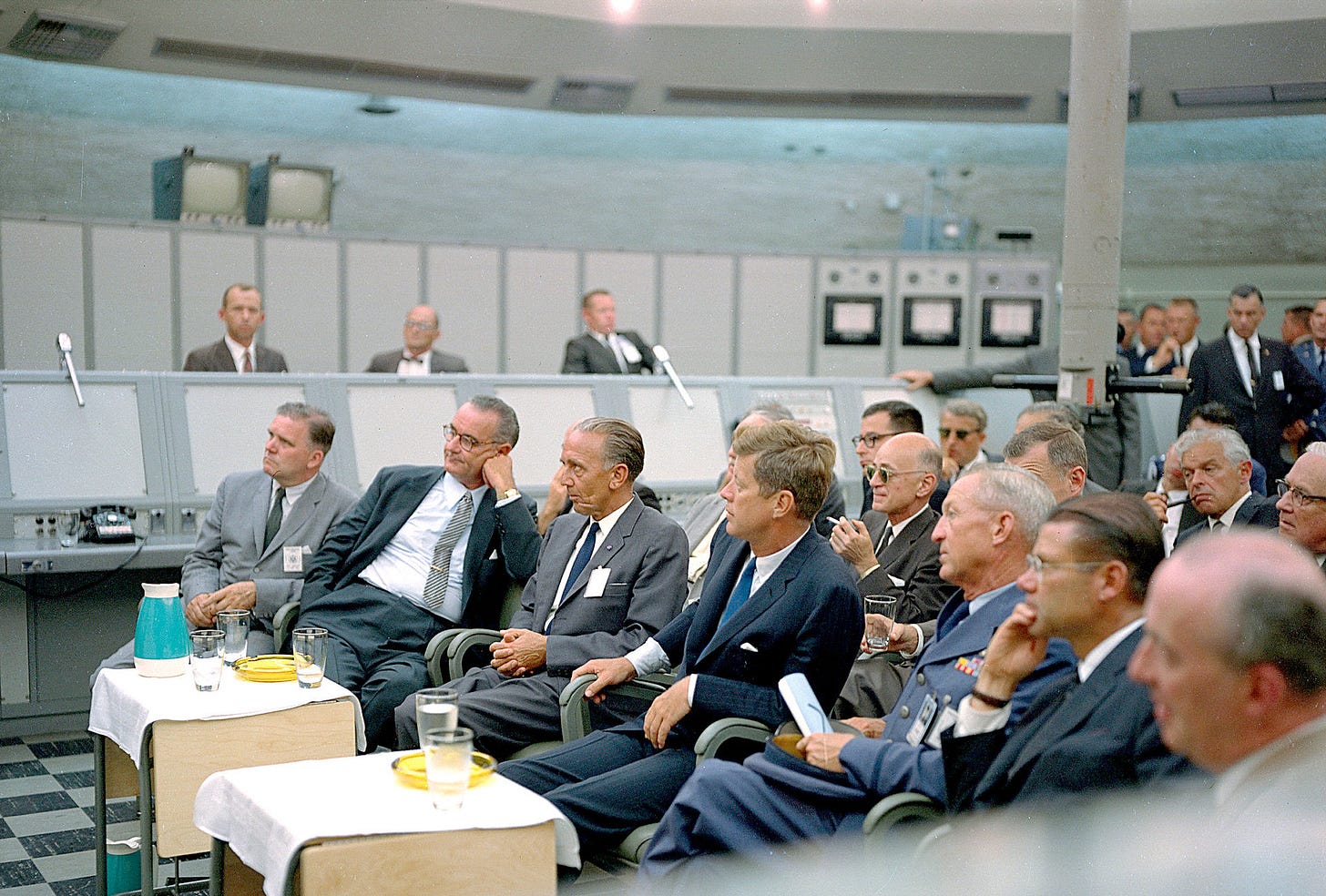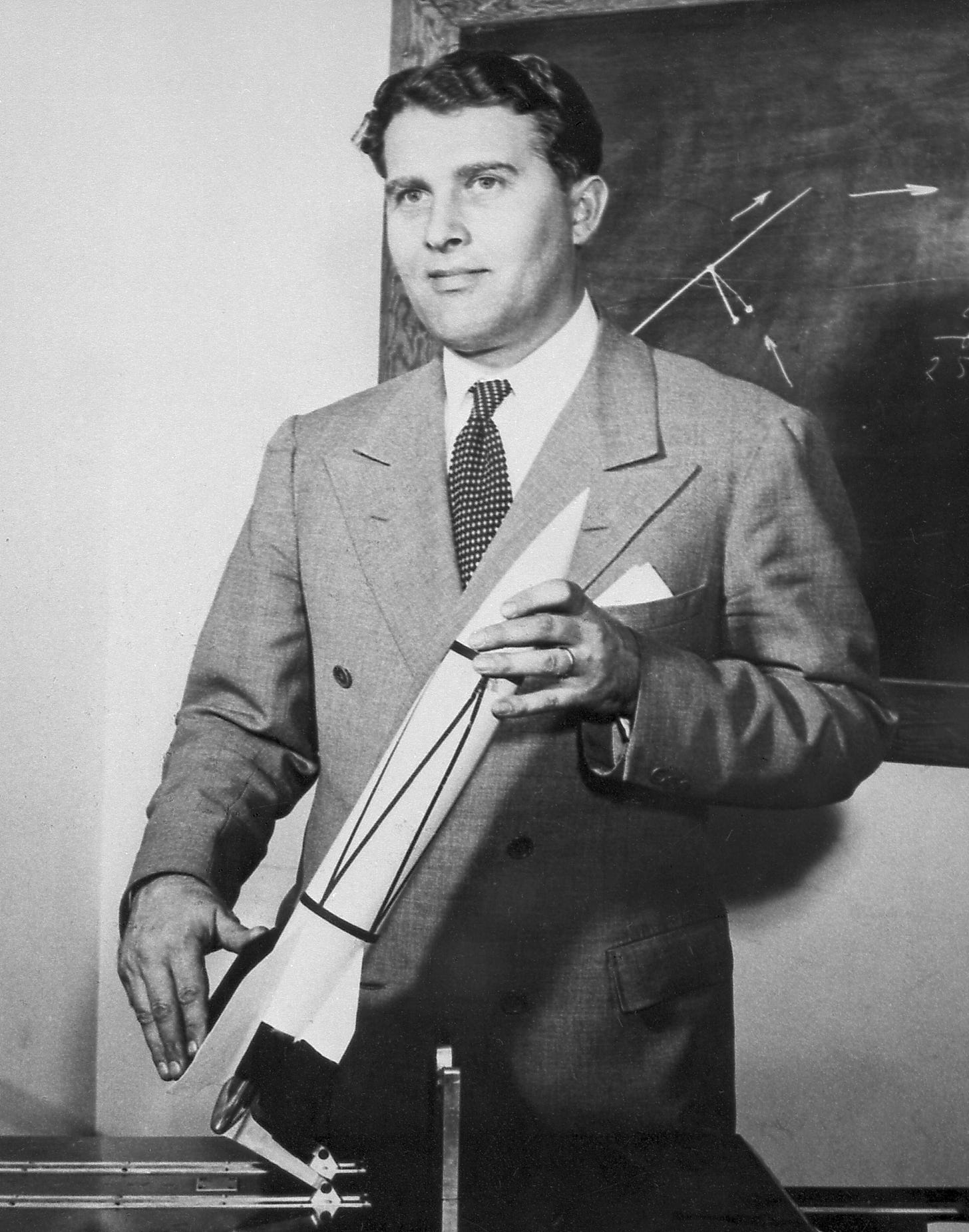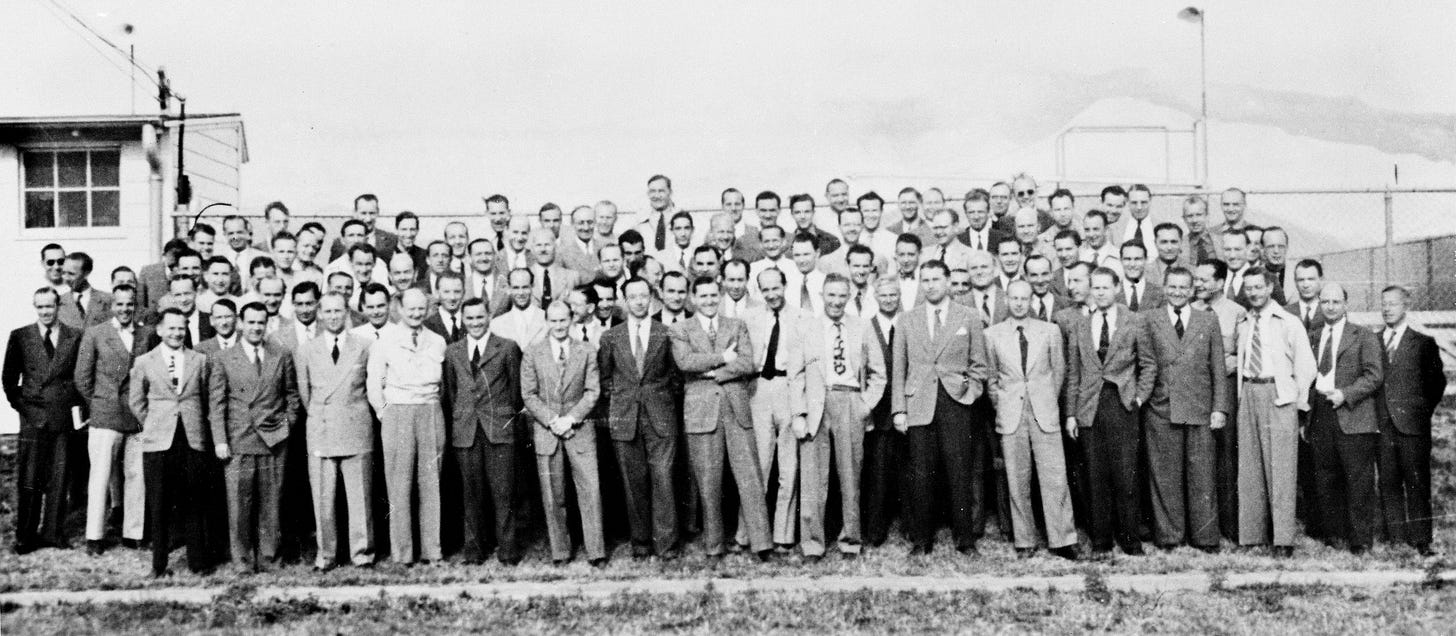Deep Dive: Operation Paperclip
When the U.S. government hired Nazis and validated the "conspiracy curious"

In general, the term “conspiracy theorist” is reserved as a modern-day slur for right-wing “Christian Nationalists” who glommed on to QAnon “drops” and rumors of children being sold in drawers from Wayfair. As a result, many find it taboo, unpopular, or unsavory to investigate anything about legitimate programs, events, or intentions that started as “conspiracies” but later went on to be revealed as authorized programs. Now, I cannot get on board with the moon landing conspiracy or the rumor that the government invented the AIDS epidemic…but every now and then, some machinations are floated where I think, “Yeah…I can see it.” Do you know why I can enter those thought spaces with relative ease? In the last 100 years of our country’s history, there have been example after example of “conspiracies” that were just reality. They happened, were stranger than fiction, and were very real. Moreover, those who might have noticed? Well, they were told they were imagining things. I think it’s a good practice for the average citizen to comb through history and correctly understand how many secret and classified plots and plans have been instituted and completed by our federal government. It offers citizens a clear grasp of what “can be” and provides some comfort to toy with theories.
Not all conspiracies result in the uncovering of an evil plot, and we wouldn’t want it to be so. But, there’s plenty of times where the government was hiding in plain sight.
Enter Operation Paperclip.
Overview
Operation Paperclip was a secret United States intelligence program initiated at the end of World War II in which more than 1,600 German scientists, engineers, and technicians, including many Nazi members and some who had been identified and prosecuted as war criminals during the Nuremberg Trials (!!!), were recruited and brought to the United States for government employment. The operation was initially called "Operation Overcast" and was later renamed "Operation Paperclip." The operation was conducted by the Joint Intelligence Objectives Agency (JIOA) and carried out by special agents of the U.S. Army's Counterintelligence Corps (CIC).
Operation Paperclip's primary goal was to harness German scientific knowledge and expertise, particularly in aerospace engineering, rocketry, and chemical weapons, to gain an advantage during the Cold War. This initiative was also driven by the desire to prevent this valuable intellectual capital from falling into the hands of the Soviet Union (they were also hunting to acquire German intelligence secretly.) Though its priority was engineering the most state-of-the-art rocket and weapon systems, it wasn’t limited to that. Efforts were also directed toward developing synthetic fuels, medicine, and other research fields. The United States knew that in order to advance in these fields, they needed the best German minds. And so, they went to find them.
Specifics
In late April 1945, the Allied forces that were moving through Germany began identifying valuable human assets for our country’s hopefully space program goals and the United States’s Special Sections Subdivision (also known as T-Force) set up the “Enemy Personnel Exploitation Section” to manage and interrogate targeted individuals. One of our government's most notable personnel “acquisitions” was the pioneering rocket scientist Wernher von Braun (watch this video for more context). Von Braun's team at Peenemünde had developed the V-2 rocket, the world's first long-range guided ballistic missile. The U.S. government saw the potential of these technologies not just for military applications but also for the nascent space exploration sector. Essentially, we wanted to own this technology at any cost.
As a result….the U.S. hired a bunch of Nazis to move to America and work on our aerospace projects. Some of them were war criminals, directly involved in the Holocaust.
Who ran the show?
Operation Paperclip was conducted under the Joint Intelligence Objectives Agency (JIOA) and involved expunging Nazi party affiliations and war crimes from the public record to make these scientists palatable to the American public and bureaucracy. The U.S. was willing to overlook the darker aspects of these individuals' pasts to leverage their knowledge against the Soviets. The main objectives of the JIOA were:
Compiling dossiers (over 1,500) on Nazi and foreign scientists, engineers, and technicians. (Interesting to note: Wernher von Braun’s dossier was never transferred to NARA. Hmmmm.)
Serving as a liaison to British Intelligence officers involved in similar scientific intelligence projects.
Collecting, declassifying, and distributing reports related to German scientific, technical, and industrial intelligence.
Assuming much of the work previously done by the Combined Intelligence Objectives Subcommittee (CIOS) after its disbandment.
Relocation of scientists in America
The operation began in the final months of the war and continued for several years. Due to the length of the “program,” scientists were relocated to various places across the United States and classified as “War Department Special Employees.”
Some of the key locations where these individuals were settled include:
Fort Bliss, Texas: A significant number of German rocket scientists, including Wernher von Braun and his team, were initially stationed at Fort Bliss. Here, they worked on rocket technology for the U.S. Army and conducted missile tests.
White Sands Proving Ground, New Mexico: After their time at Fort Bliss, von Braun and his team were moved to White Sands Proving Ground, where they continued their work on rocketry. This location was pivotal for the testing of V-2 rockets that the U.S. had captured at the end of World War II.
Huntsville, Alabama: Eventually, many of the German scientists, including von Braun, were transferred to Huntsville, Alabama, to work at the Redstone Arsenal. This location became a central hub for the U.S. missile and space programs, and von Braun's team played a key role in the development of the Redstone and Jupiter missiles. Huntsville later became the home of NASA's Marshall Space Flight Center, which von Braun directed (see video at the bottom of the post.)
Wright-Patterson Air Force Base, Ohio: Some of the German experts, particularly those specializing in aeronautics and medical research, were brought to Wright-Patterson Air Force Base. This facility was involved in various research and development projects, including aviation technology.
Various Other Locations: Depending on their specialties, other German experts were relocated to different facilities across the United States, including research institutions, military bases, and companies involved in aviation, chemistry, medicine, and other fields relevant to the Cold War's technological race.
Setting aside the extreme moral implications of the United States hiring and hiding these men, their work did have a profound impact, influencing the direction of U.S. science and technology for decades, particularly in the space race and ballistic missile development. They further developed and tested rocket technology, laying the groundwork for the United States ballistic missile and space programs.

As mentioned above, the largest contribution to Operation Paperclip is widely accepted as Wernher von Braun and his team. They were highly instrumental in developing the U.S. Army's ballistic missile program. Their work eventually contributed to the creation of NASA, where von Braun played a key role in developing the Saturn V rocket, which enabled the Apollo missions to the Moon.
“The Saturn V weighed a staggering 6.2 million pounds — about equivalent to a herd of 400 elephants — when fully fueled, with the first stage alone holding 203,400 gallons (770,000 liters) of kerosene fuel and 318,000 gallons (1.2 million liters) of liquid oxygen.” Source.
How do we reckon with this?
No one would argue that Operation Paperclip contributed significantly to U.S. scientific and military advancements, but we can’t ignore the severe ethical compromises that were made in an effort to thwart the Soviets in the space race and technology. The recruitment of individuals associated with Nazi war crimes and the government’s willingness to overlook their past actions for technological gain reflects the very real moral compromises our government was willing to make during the Cold War era.
Often, when normal citizens raise concerns about things they are watching happen across the country, it's with examples like this in mind. With a shroud of secrecy, elected officials in our country can put programs in motion that are lacking in proper moral and ethical considerations. Operation Paperclip is a stark and clear example of realpolitik, where these considerations were secondary to strategic interests. It highlights the tensions between justice and pragmatism, morality, and national security. As such, it serves as a critical case study in the history of science, ethics, and international relations, offering valuable lessons for understanding how technological and scientific advancements can often become the sole consideration of global elites while moral examinations are set aside.
When I look at the many advancements that our country has made in space, aeronautics, rocketry, and missile technology, it is pretty remarkable. That being said, a real part of me laments how we acquired the intel that fueled our achievements. Would we never have procured this intelligence on our own? Could we not have developed the plans and infrastructure without hiring men involved in one of the most wicked historical events in recent history?
It makes sense why the government worked tirelessly to keep this operation private. Perhaps they knew the general public would find it more palatable after we were the first to land on the moon or acquire the Saturn V. Or maybe they didn’t disclose the means by which we would succeed because they, too, felt guilt for what they were doing. Not enough guilt to shut down the operation completely, but just enough to quietly ship these “scientists” all around our country under a cloak of mystery.
For even more context around Operation Paperclip and a look at one of the locations that scientists were relocated to, I found this video fascinating:






My husband, oldest son and I just this week have been watching a series on Daily Wire called “What We Saw” and season 1 is all about the space race and the lead up to Apollo 11. It talks about Vin Buren as well. Very interesting show. I recommend it.
Can you please link the video again? I don’t see it.